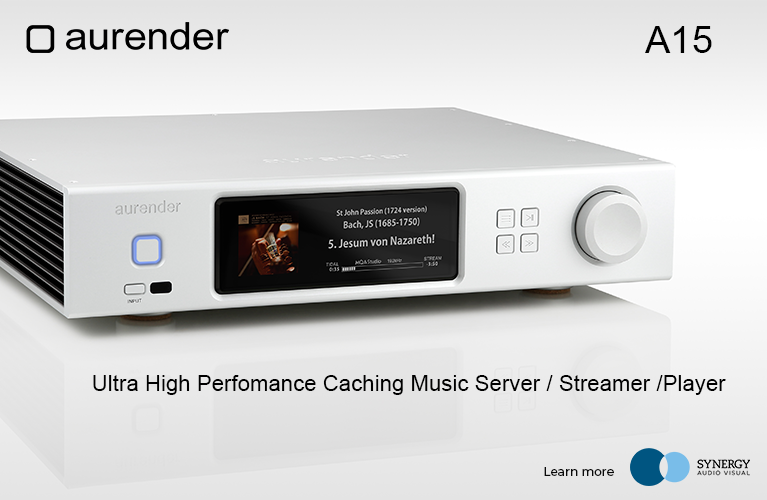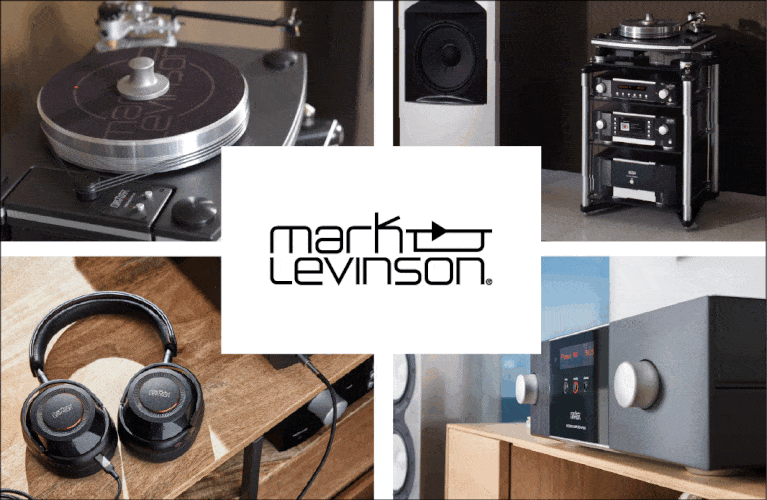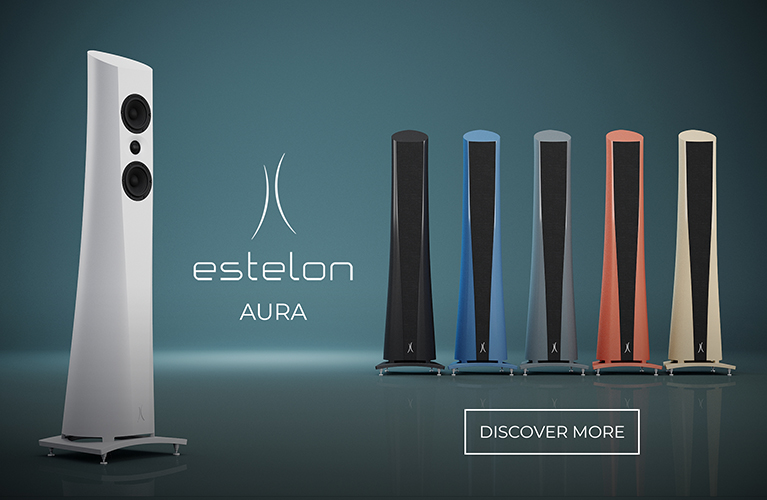When the box arrived, I thought… this is a company that cares about product safety and presentation. Two speakers were contained in one reenforced wooden box, very neatly made and finished, with subtle but effective company labelling on all sides. There were strong straps around the box as well. You could easily get the speakers out through the side labelled “front”, without removing the straps. Inside, the box was padded with thick Styrofoam that cradled all sides of the speakers. Each speaker was then in its own padded bag. So, who goes to all this effort before you even get to listen? With the new Nina Statement loudspeakers, Hulgich Audio does.
Beautiful Boxes
The speakers under review are the new Hulgich Audio Nina Statement, named after the legendary jazz artist, Nina Simone. They are the smallest and least expensive speaker made by Hulgich Audio (that is no intended slight to Nina Simone herself!). Nick Hulgich is the man behind Hulgich Audio, based in Adelaide, Australia, who designs the company’s products in cahoots with Göran Niréus in Sweden, an engineer with exceptional technical expertise. The appearance, feel and weight of each Nina Statement speaker emanates class and fills you with anticipation and confidence before you even listen.
The Hulgich Audio Nina Statement speakers (mistakenly called ‘Nina Signature’ at times) stand out from the earlier Nina in that the crossover network parts have been upgraded and the cabinet is now in a full gloss Ebony Macassar veneer finish combined with a gloss black baffle.
The Ninas (for short) are a two-way speaker with a rear port and a frequency response of 37 Hz to 23 kHz. Sensitivity is given as 86 dB @ 2.83V at 1 metre distance, nominal impedance is 4 ohms. Hulgich Audio recommends a minimum of 100 watts per channel to adequately drive them. I sensed that they do like power and current. I had only my reference amplifier to drive them, and they responded very nicely to that. They also liked to be played at high volume (high by my standards is 75-85 dB average). When played more softly, the bass didn’t come alive quite as much as I prefer.
Both of the two drivers are the top-spec ‘Satori’ models designed and made by SB Acoustics; a company with design based in Denmark and manufacturing in Indonesia. Their design and build quality are world-class.

The tweeter is a 1.2 inch (30 mm) ring dome with a non-resonant diaphragm for minimal high frequency break-up. It has an optimized dual balanced compression chamber design for improved dynamics, and dual copper caps for absolute minimum voice coil inductance and minimum phase shift. It utilises a flow optimised vented pole piece for optimum coupling to the rear chamber. It has a low resonance frequency for extended range, and long-life silver lead wires.
The mid-woofer is 6 inch (152 mm) made of Egyptian Papyrus fibres with a soft low damping rubber surround for optimum transient response. The chassis is a vented aerodynamic cast aluminum design which ensures low compression. The spider is what SB Acoustics calls its Advanced BIMAX spider which is designed to improve linearity. It has a non-conducting fibre glass voice coil former for minimum damping. It has a CCAW (Copper-Clad Aluminium Wire) voice coil for reduced moving mass. The motor system utilises a powerful optimised low distortion neodymium. Long life silver lead wires are attached 180 degrees apart for improved stability.
The crossover point is at 2200 Hz. All internal wiring is high-grade copper. Crossover components are high quality and include Mundorf MCap EVO capacitors and Jantzen coils.
The cabinet dimensions are 20 cm W x 42.8 cm H x 42 cm D. Cabinet walls are 22 mm MDF, the baffle is 38 mm MDF. Each Nina weighs 14 Kgs. The binding posts appear to be very high-quality and accommodate spades, bananas and bare-wire.

The new Nina Statement also has a raft of in-house technologies developed for the previous generation models. These include LDBT (Low Diffraction Baffle technology) and CST (Coherent Sound Technology). I suggest you refer to the Hulgich Audio website for more information.
Regarding the speaker build, my only question is whether the speakers actually really need a layer of felt on the bottom panel. Even a gentle nudge can see a speaker careen off its stand. I had to be very careful. Of course, you can use Blu-tack underneath, but that would make a bit of a mess on the felt. And given the speakers were in for review, I didn’t want to inflict any damage to them, as minor as it might be. Perhaps Nick found that they actually sounded better with the felt – perhaps they offer a layer of constrained damping.
Making a Statement
My review pair of Nina Statements were, of course, in the beautiful gloss Ebony Macassar veneer finish with the full gloss black baffle. The fit and finish was astoundingly good, flawless in its finish. The attention to detail was exceptional, easily the equal of other world-class speakers.
I discovered fairly quickly that you cannot just plop them down wherever they look pretty (which is pretty much anywhere!) and expect them to sound excellent. Sure, they’ll still sound good, but you do really have to pay attention to the setup stipulated by Hulgich Audio to get the best out of them. Nick provides information about this when you purchase a pair. If you toe-in the speakers too much, then the tweeters can be too prominent. If you point the speakers to the sitting position, then you tend to lose imaging and depth and the soundstage may become too narrow. Nick suggests you initially set them straight ahead (no toe-in), and then adjust to see what you prefer.
Using Nick’s direction, I ultimately found they sounded best when they were 2.2 metres apart, 2.9 metres to my ears, and with very little toe-in (around 5-10 degrees). The speaker performance is optimised for a tweeter to ear distance of 3m, but slightly less is fine. The tweeter was about 930 cm from the floor which was about the height of my ears to the floor.

Not meaning to give too much away too soon, but the Ninas reminded me of the Hulgich Audio Dukes (yes, named after Duke Ellington) that I’d reviewed a few years back. Although the Dukes are considerably larger, the Ninas had that same “balanced” sound quality. More on this later.
I first listened to the Arooj Aftab track “Mohabbat” on Vulture Prince (96 kHz/24-bit) to see how well the Ninas resolved fine detail. This song won the Best Global Music Performance at the 64th Annual Grammy Awards (April 2022). Through the Ninas, you can clearly hear a solid bass drum quietly beating throughout the track. The drumbeat is heard quite separate from the vocals and guitar which are very natural, articulate and present. The dynamics and skin tone in the drum can be heard even when played softly.
The Patricia Barber track “Pieces” on her album Live: A Fortnight in France offers up solid kick drum and great resolving power. I selected this track to test the efficiency of the midwoofer. To be honest, before I started listening, I feared I might find some degree of smearing due to phase modulation that may result when a single driver is asked to do both deep bass and midrange duties. As you can imagine, the driver can be very busy producing cone excursions at many different frequencies, and that can introduce frequency distortions (3-way speakers with a dedicated midrange driver have an easier job of this.) I’m very happy to report I could not detect such a problem with the Ninas. At one point I thought I had… but it turned out that the Ninas were allowing me to hear odd things in the actual recording that I couldn’t hear through my reference speakers. The track “Whiteworld” from the same album is also a bit of a torture test. The chosen Satori midwoofer is obviously an excellent and very fast driver.
One of my many test tracks is the Chris Jones track “Roadhouses and Automobiles” from the album of the same name. It’s a good track to hear the tonality of Jones’ voice and all the low-level detail. I was very pleasantly surprised to hear exceptional detail and tonality similar to my reference speakers, as well as spot-on placement of voices and instruments. You can clearly hear the zing in the guitar and the birds chirping at the end of the track. The track also portrayed the music in a big soundstage with excellent depth.

Next, I decided to push outside the limits of what you should expect a small standmount speaker to do. I played “Heaven” by Ian Moss on his album Petrol Head. This track has real low grumbling bass impact simultaneous with vocals and raw guitar. The Ninas performed surprisingly well, given the limited low bass depth demanded by the laws of physics. Using Decibel X through my reference speakers, I know there is a lot of low bass below 40 dB. The Ninas were a bit light and rolled off this very low bass. You still felt the intended purpose behind that impact, but it was a bit less impactful. I also tried the title track to Limit to Your Love by James Blake. The Ninas did struggle a bit with the intense low bass when that vibrating bass kicked in. But they didn’t give up, they just reduced the intensity of the vibrations somewhat. They can play louder than is reasonably expected. Of course, this type of music isn’t what smaller stand-mount speakers are normally asked or expected to do. But for those that are curious, now you know.
Years ago, I used to listen to the sweet and soft pop/folk of Mary Chapin Carpenter. Curious to see how emotive the Ninas could make me feel, I played “Come On, Come On” (twice!) from her album of the same name. It sounded ethereal, almost spiritual, the presence and openness were tremendous. Her voice, her guitar and the piano were exceptionally natural, and vividly clear and smooth. There was also natural soundstaging and depth. And it was, indeed, sweet sounding. Smaller two-way speakers have a real gift when it comes to believable midrange.
To check the timing and tempo of the Ninas, I played “Bye Bye Blackbird” from the album Ben Webster Meets Oscar Peterson (96 kHz/24-bit). The low bass was a bit softened, but the tempo and timing were just right. Both the sax and piano had believable timbre and dynamics. And the low-level resolution was so good you could easily hear people in the studio softly chattering away in the background. The sound didn’t radiate out into the room as much as I expected, it was a bit small sounding. This is likely more to do with the 65-year-old recording than the Ninas themselves.

I played some classical from the Ola Gjeilo album Dreamweaver (96 kHz/24-bit). Listen to “Husedalen” to hear excellent layering and tonality of instruments and vocals. Listen to “Autumn” to hear beautiful vocals; you can virtually place the singers on the stage. Listen to “North” to hear wonderful solo piano by Gjeilo.
Some speakers have a tendency to make music sound two-dimensional; the sense of depth can be curtailed. The Ninas give you an excellent sense of depth (when it’s in the recording), and its imaging is excellent as well. I played “You Never Give Me Your Money” by Ulf Wakenius from his album Taste of Honey (96 kHz/24-bit). The Ninas tell it like it is… the recording is mastered loud and forward, but also has great depth. There is real delicacy and purity in the acoustic guitar, the snare swishes are very prominent. The track “Little Old Lady” by Ralph Towner on his album At First Light (96 kHz/24-bit) is the exact opposite – it’s very laid back, soft and purely acoustic. The Ninas are great speakers for acoustic music, and allow you to hear how things have been mastered so differently.
When playing bass with prominence around the 80-100 Hz range, the Ninas are superb. Listen to Terje Gewelt playing “Aurora Borealis” on his album Dusk Till Dawn (96 kHz/24-bit). His bass is central to the track – there is beautiful tone and strong bass lines. There is minimal instrumentation on this track – only his bass and a synthesiser adding background effects in support of the melody. On this track, the Ninas sound much bigger than they actually are. If I closed my eyes, I could almost believe I was listening to my larger reference speakers.

Lastly… a bit more classical. The album Moderato Cantabile (88.2 kHz/24-bit) by Anja Lechner and Francois Couturier is quite beautiful. The track “Impresiones Intimas VIII ‘Secreto’” has woody resonance in the cello with beautiful sustain, and percussive purity in the piano. The pianist slightly delays the leading note at times, to lend a hesitation which subtly draws your attention. And even at high volume, the tweeter was smooth, it never turns harsh. The Ninas truly excel with such small ensemble music.
Conclusion
When I undertook this review assignment, I was somewhat apprehensive. You see, Hulgich Audio speakers are held with great reverence here in Australia. Although Nick is a good friend, we both knew that if I found something not quite right during my review that nonetheless I’d have to write about it. Well, I’m happy to say the Ninas “passed muster” with flying colours.
Of course, they don’t push a lot of air into the room, so you don’t get bass pounding into your chest. And you can sense that this is a 2-way and the drivers are very close to each other – you do get a big soundstage but one that isn’t as vertically tall as a multi-driver floor stander. Oddly enough, when you listen from outside the music room, they sound like huge speakers! But those aren’t criticisms, merely observations. Even an idiot savant would know that the Ninas are not designed with such things in mind – they are a small-to-mid-sized 2-way stand mount speaker. They perform exceptionally well in the space they are expected to perform. If you love the sound of the Ninas but want more oomph, you could perhaps entertain the idea of mating them with a high-quality subwoofer (preferably two).
As beautiful as they sound, I feel that they will perform best in smaller rooms with small ensemble, jazz or acoustic music. I say that because the sense of scale is slightly reduced with the Ninas. They don’t really allow a full-scale orchestra to open up into your room, like my reference speakers do. Again, that isn’t a fault of the Ninas, it’s the result of their rather small size. If you want to play full-scale orchestral music or head-banging death metal, then perhaps the new Hulgich Audio Dukes would be more to your liking.
The Ninas are speakers you can listen to for hours. The crossover is designed such that the ring-dome tweeter presentation is ever so slightly soft – it’s never “in your face”. That said, it is definitely extremely resolving and never dull sounding. It may slightly soften those screeching guitars in hard metal rock, but really, you won’t ever feel like you’re missing something in the treble, in any track in any genre. This forgiving character is something I also noticed in the original Hulgich Audio Duke speakers I reviewed years earlier.

I said earlier that the Ninas have “balance”. By that, I mean Hulgich Audio hasn’t pumped up the mid-bass so they sound overtly big and powerful, nor have they exaggerated the treble to give the false impression of detail. Instead, they are engineered to let you hear the delicacy in a harp, the sweet smoothness of old jazz guitar, the precision and flow of the leading string of a cello followed by its sustain and decay, the exceptional timbre of an acoustic guitar, the bite of a trumpet, the focus and percussive nature of a piano, the dynamics of a drum kit. Everything just sounds natural and balanced.
So, there you have it… the Hulgich Audio Nina Statement speakers are truly great speakers. Like Nina Simone herself, they radiate purity, presence, balance, beautiful timbre and emotion. I’ve heard a few other standmount speakers around the price of the Ninas, and I dare say the Ninas are easily their equal or better. Would I buy them? If I had the need for them…in a heartbeat.
… Tom Waters
www.soundstageaustralia.com
Associated Equipment
- Speakers — Bowers & Wilkins 801 D4
- Amplifier — Gryphon Audio Designs Antileon EVO
- Preamplifier — Trinnov Audio Amethyst
- Sources — Grimm Audio MU1 Music Server, Weiss HELIOS Reference DAC
- Processor — Trinnov Audio Amethyst
- Cables — ZenSati #1 interconnects and #2 speaker cables, Audioquest Dragon jumper wires, LA Sound AES-EBU, Nordost Tyr 2 AES-EBU, AudioQuest Vodka Ethernet cables, Trinity (DE) power cords, Synergistic Research Hologram A and D power cords, LA Sound Titan power cord, ANTICABLES Level 3 Reference power cords (into and out of Nordost QX4 line purifier)
- Audio Rack — Schroeders and Schroeders, Symposium Ultra custom-made amplifier stands
- Miscellaneous — Nordost Quantum QX4 line purifier, Nordost Quantum QB8 power distribution, Nordost Quantum QV2 AC line harmonizers, Nordost Quantum QK1 AC Enhancer, three dedicated 20 amp power lines, HRS Vortex Chassis Noise Reduction (set of 4 footers), Symposium Rollerblock Jr isolation footers, Symposium shelves, Viablue UFO XL Absorbers, Vicoustics Super Bass Extreme traps, Vicoustics Cinema Round diffusers, Vicoustics Multifuser DC3 diffusers, Vicoustics Multifuser Wood MK2 diffusers, RealTraps bass traps
Hulgich Audio Nina Statement Loudspeakers
Price: AU$9200
Australian Warranty: Five Years Conditional
Hulgich Audio
500 Andrews Rd
Andrews Farm SA 5114
Australia
+61 401 419 342
www.hulgichaudio.com












